
If there’s one space that can get cluttered and disorganized quickly, it’s a small desk. Between housing notebooks, papers, pens, planners, and a seemingly endless amount of sticky notes, your workspace can serve as an area that provides you with more stress than structure. Not only is this visually unappealing, but it’s also not a functional way to live or work — yikes!
Whether you’re trying to set up an apartment desk, dorm desk, or a small WFH space, these organized spaces will inspire you to create a tidy area where you can get through your to-do’s. Plus, we’re sharing some hacks and useful organization products that will allow you to easily maintain an organized desk. Happy working awaits.
1. Utilize your wall space
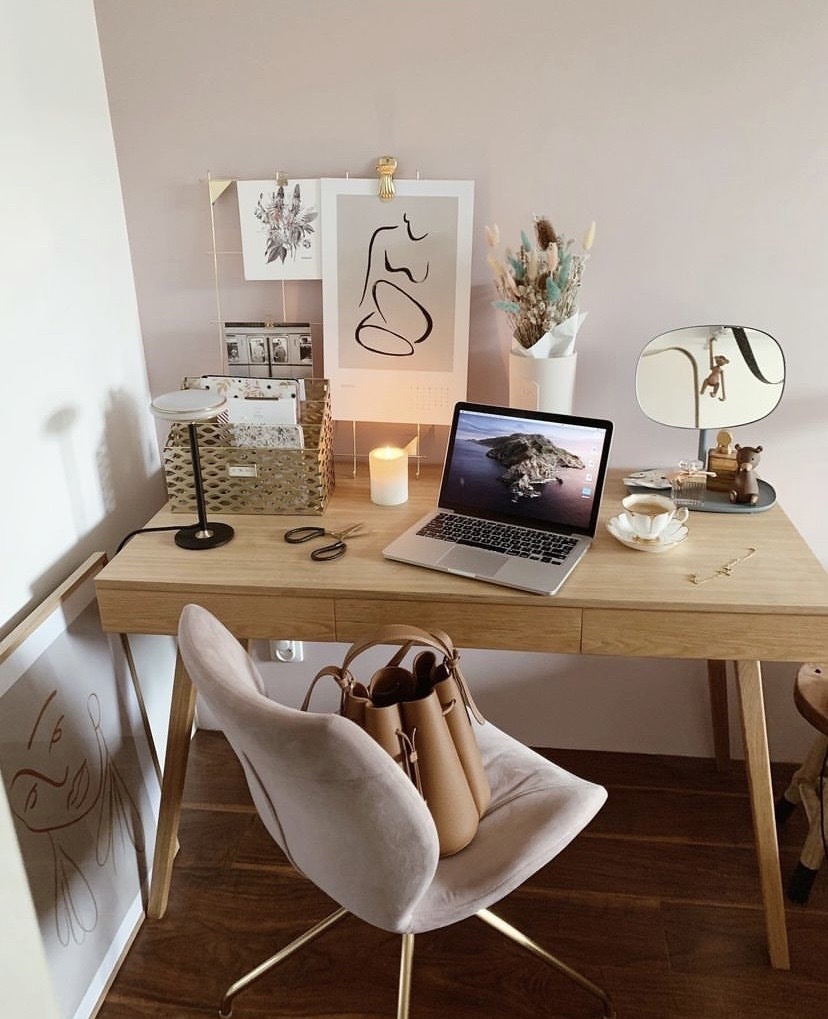
When organizing a desk, it’s easy to forget that not all of the useful space is located directly on the desktop. If you have wall space that can be utilized, be sure to take advantage of it. This chic work area proves that just a simple metal grid can lift papers and notes off of your work surface. Use a grid to hang your latest meeting notes, to-do list, or calendar.
2. Raise your computer
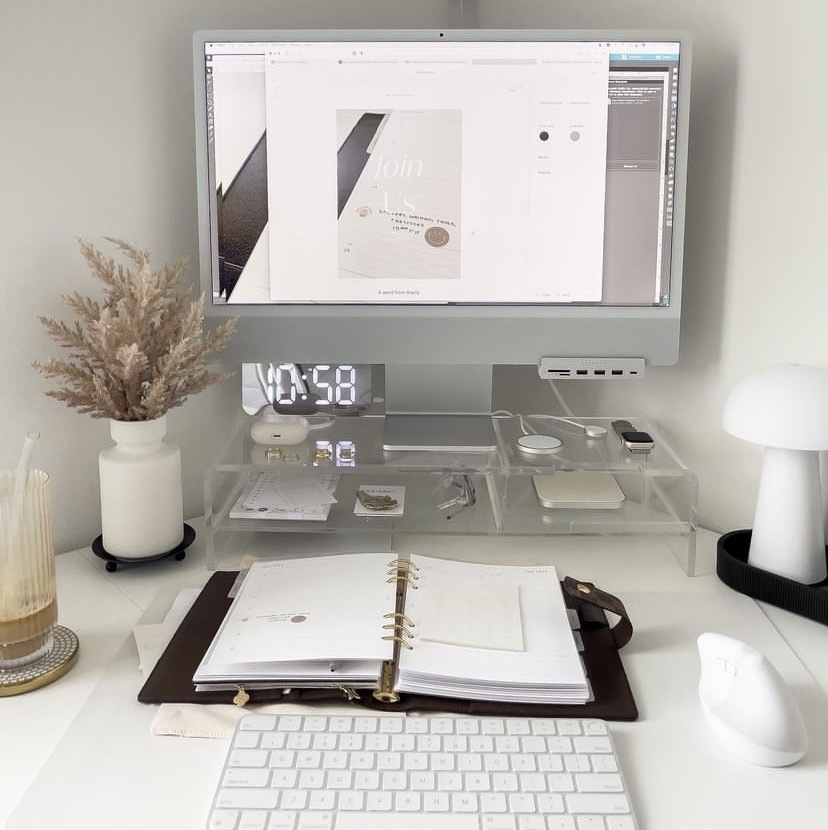
Using a raised computer or laptop stand means that there’s more room on your desk to spread out. It also looks more streamlined and organized. Some stands even have built-in shelves and drawers for extra storage.
3. Go big with extra storage

Most monitor stands are made to just lift up your electronics, however, this setup shows that you can score more space by choosing a stand that’s extra long. While dual monitor stands can be used for storing two screens, they can also be used to set other office staples on top of. Try placing your pencil holder, speaker, chargers, or notepads on top of a large monitor stand to get the most out of your work surface.
4. Keep your desk drawer in check
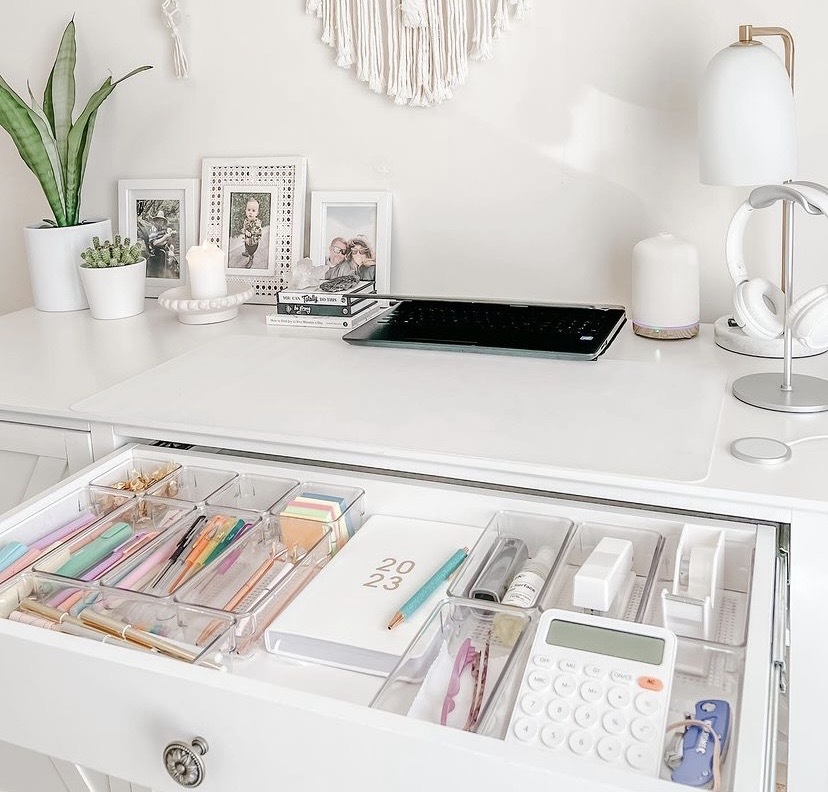
What’s inside your desk drawer matters too. Rather than opening it to a chaotic mess, keep things tidy by setting your office essentials in small organization trays. Group like items with each other (like pens in one organizer and highlighters in another) so you can easily grab whatever it is that you need.
5. Create a filing system
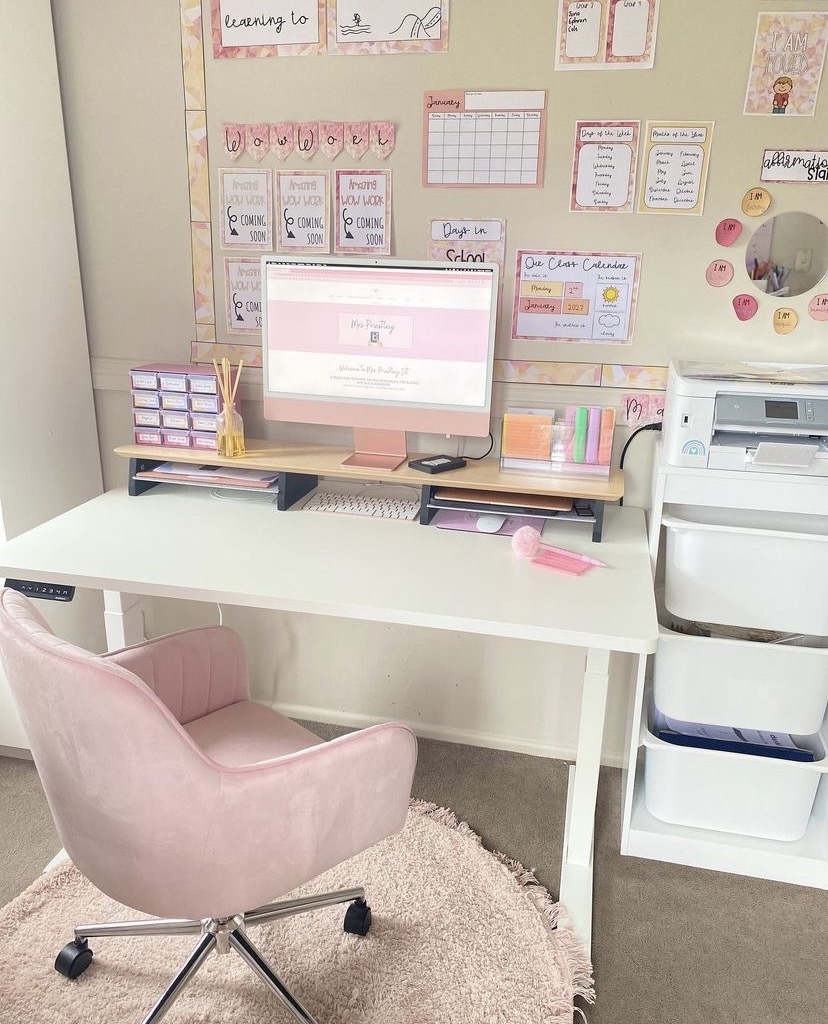
Sometimes you just need more room than what your desk can provide you with — and that’s okay! If you’ve tried to scale down on your office necessities but can’t seem to cut back, use a simple filing cabinet or storage bins to house anything excess. This is a smarter way to handle extra materials and necessities as opposed to squeezing everything onto your desktop — which would only create more frustration down the road.
6. Keep your to-do’s on a bulletin board
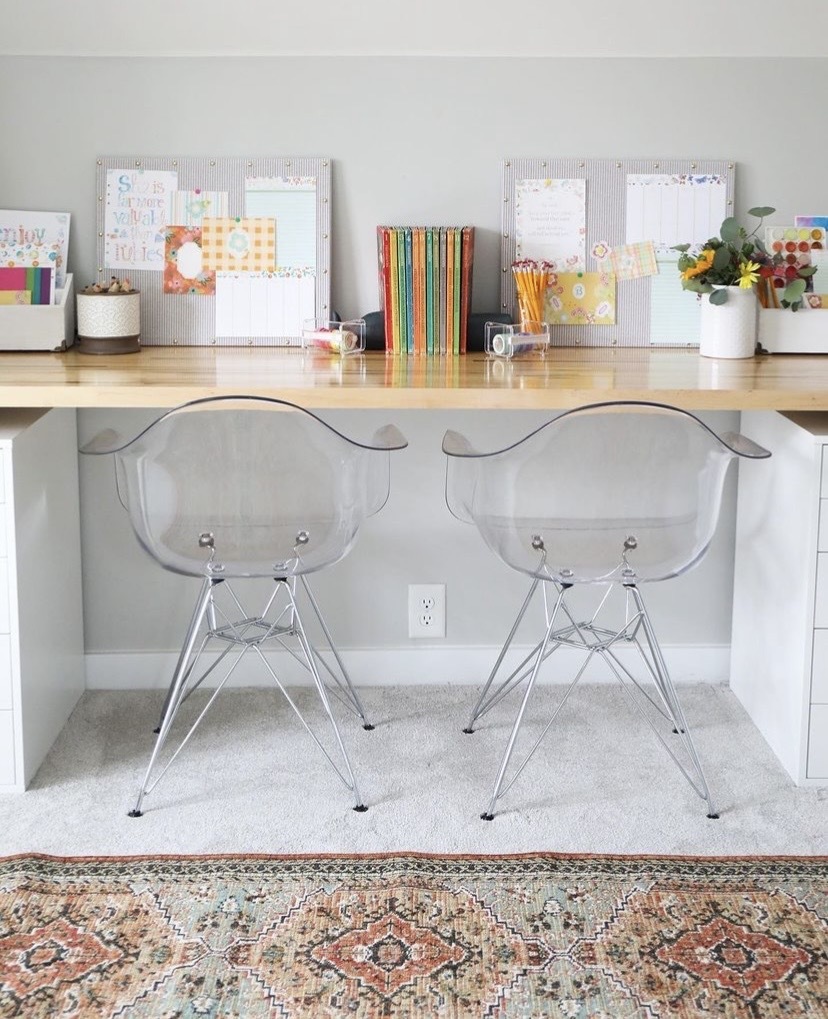
When your to-do list is in front of you, it’s likely that you’ll be more inspired to tackle it. This is where using a bulletin board can come in handy. Pin your list and any other reminders or notes to it so it stays top of mind. Using a bulletin board will also ensure that you don’t misplace any important paperwork — and it will free up space on your work surface.
7. Use a combination of organizers
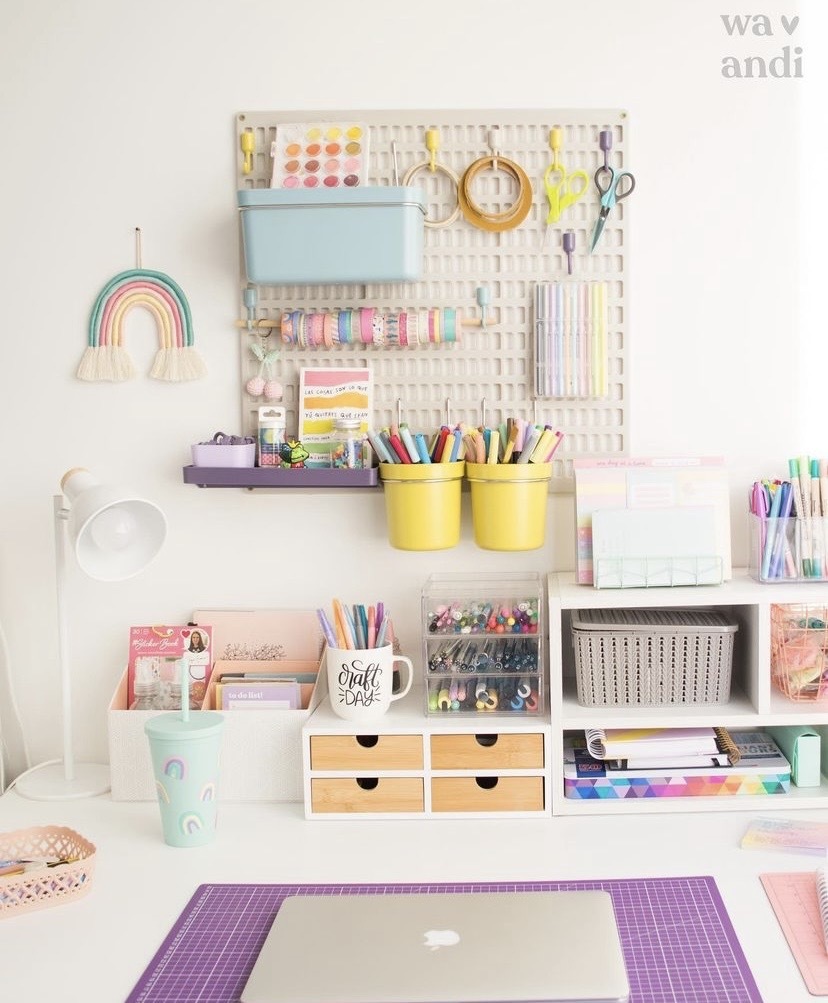
Sometimes the best way to get organized is to use a combo of items, and this desk is the perfect example of that. Try using organizers that have drawers, cubbies, shelves, or slots that you can place your most used office supplies inside of. That way, you can test out a system that works best for you. (Spoiler: It might just be a variety of them all!)
8. Try a wire basket
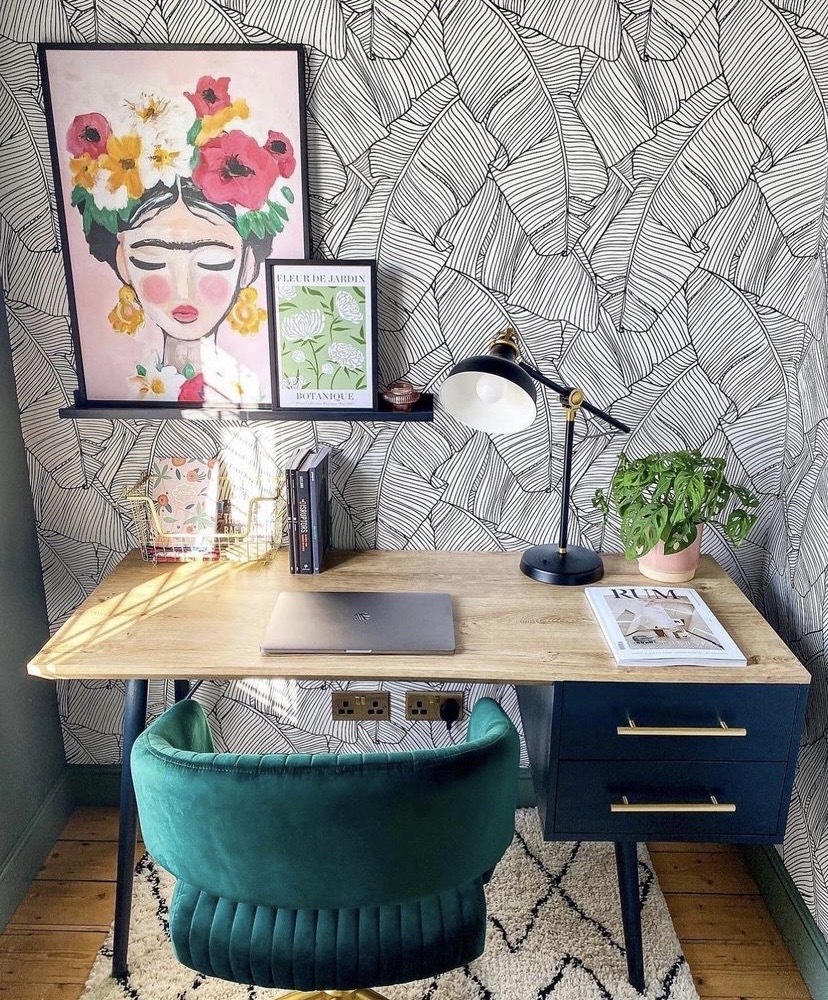
Keep incoming or outgoing paperwork sorted in a wire basket. This way, you can keep your desk free of random paper and bills that might keep you from focusing on your work. Using a letter tray is another easy way to stash material that needs to be taken care of when you have spare time.
9. Keep everything lifted
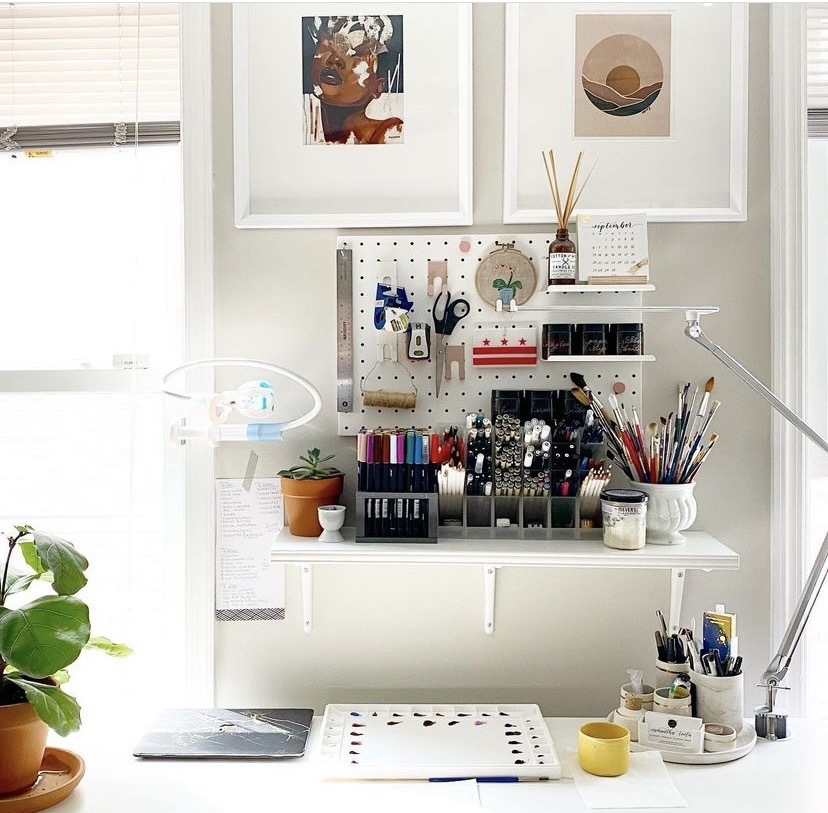
To gain the most from your workspace, you’ll have to maintain a desktop that offers you ample room. This might mean that you need to use shelves to store your supplies. Don’t be afraid to use hanging storage options if it gives you more space to spread out and do your work. Just be sure to check with your landlord before drilling anything into the wall.
10. Keep your calendar clear
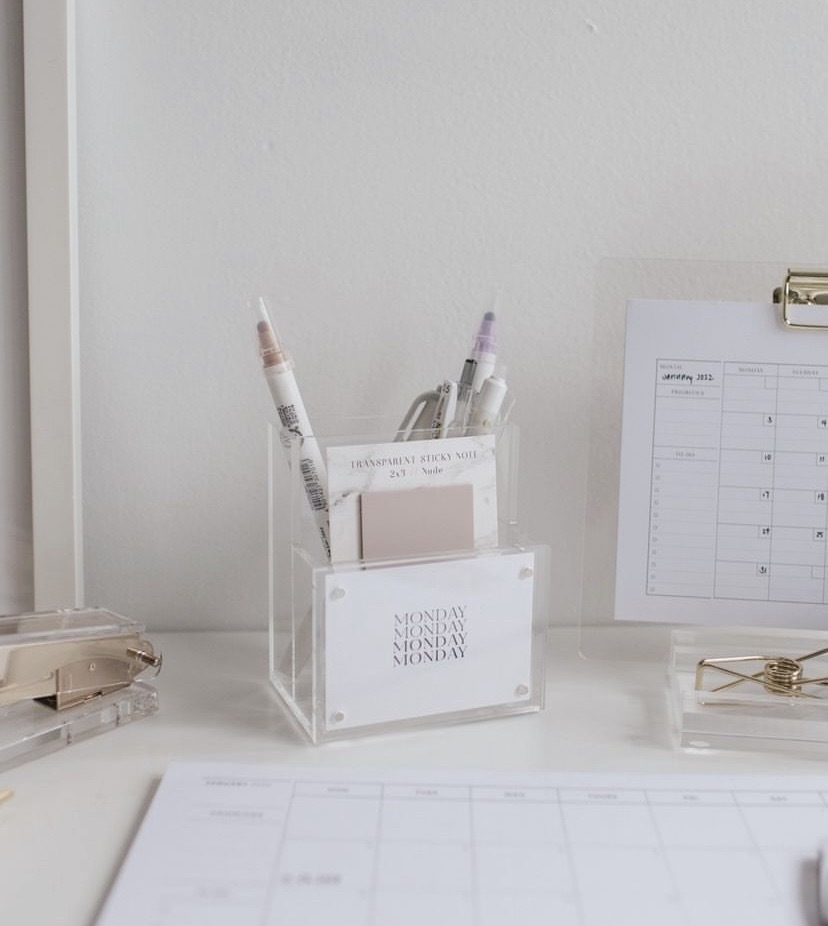
Last but not least (and arguably most important), keep your calendar in check by using a desk pad that doubles as an agenda. This can help you eliminate the need for a planner and it’s easy to write and type on top of.







